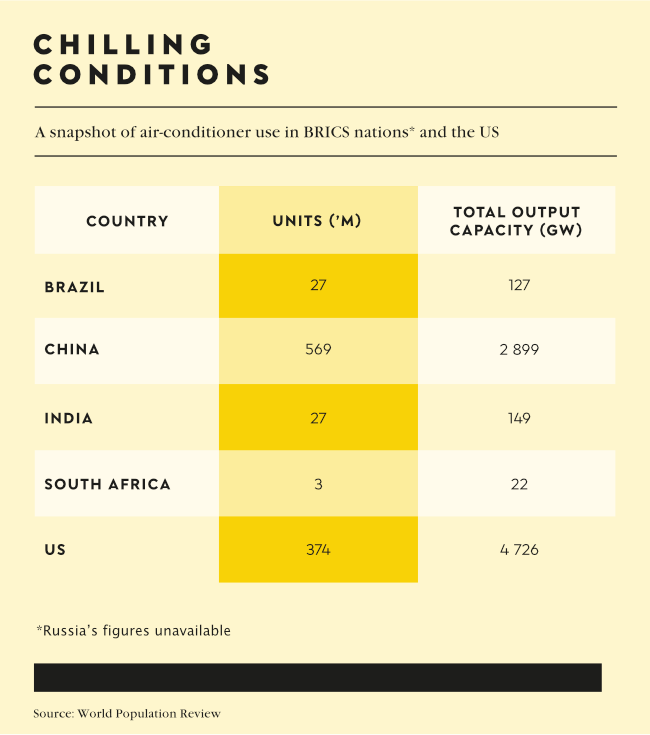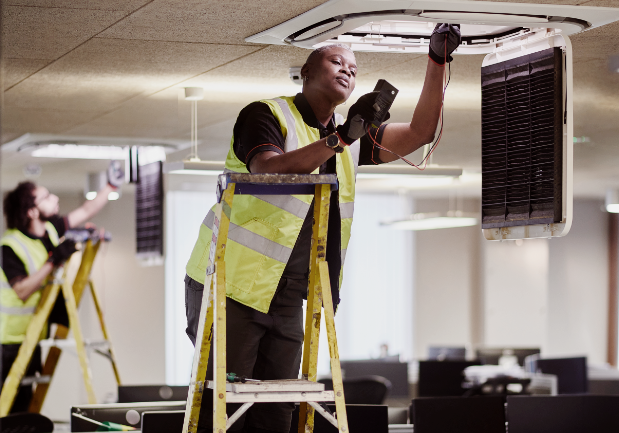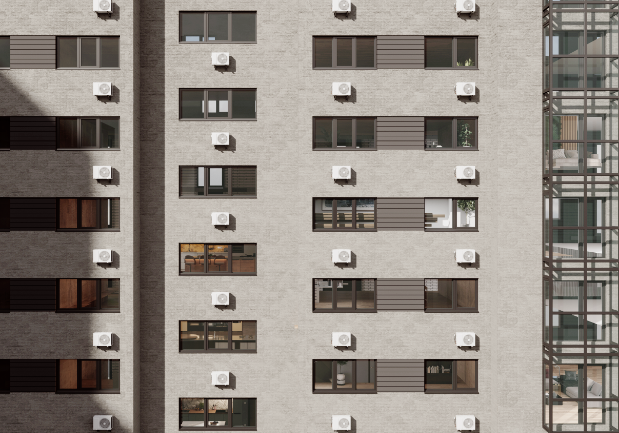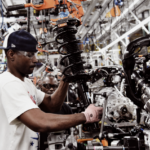‘Eskom says air conditioners caused Stage 6 load shedding,’ shouted headlines in the South African media. It was only the beginning of December 2023, not even the height of summer yet, at a time when the South African Weather Service was forecasting ‘above-normal’ minimum and maximum temperatures in the months ahead, thanks to the return of the El Niño weather phenomenon. Globally the World Meteorological Organisation was predicting record-breaking temperatures over the next five years to 2027.
Worldwide, as temperatures climb, so does the use of air conditioners. According to one estimate, the world will add 1 billion air cons by 2030. In South Africa, the need for cooling is no different, for those who can afford it. And its electricity grid is battling to cope.
‘The Sunday just before Black Friday, we had some units down, and we had started recovering them when we were hit by the incredible heat wave, and suddenly usage spiked by about 1 500 MW,’ Lethabo power station GM Karabo Rakgolela told the Sunday Times. ‘In a heat wave such as this recent one, you can see the usage go up as the entire affluent South Africa switches on their air conditioning and fans, and that usage stays up as long as it stays warm.’

He has a point. Air cons are notorious energy guzzlers. A household air conditioner can consume about 3 000W of electricity an hour. Portable air conditioners can be even more energy hungry at up to 4 100W/h, while central air con units range from 3 000 Wh to 4 000 Wh. And obviously it’s not good for the environment in terms of energy consumption and potentially noxious emissions.
Analysis by the US-based sustainability research NPO Rocky Mountain Institute (RMI) suggests that the adoption of typical AC products sold on the market today would contribute to cumulative emissions of more than 100 gigatons of CO2 equivalent by 2050 – more than twice the total worldwide greenhouse gas emissions today.
The simple solution would be to not use air cons at all, wouldn’t it? The Cool Coalition, an initiative of the UN Environment Programme – which counts among its partners several African countries including Djibouti, Ghana, Kenya, Morocco, Rwanda, Senegal and South Africa – sums up the catch-22 situation the world finds itself in.
‘Almost one-third of the world’s population faces dangerous temperatures for more than 20 days a year, while heat waves cause 12 000 deaths annually. Staying cool is a health and productivity issue. We need to provide equitable access to cooling to protect people against extreme heat, keep food fresh, vaccines stable, and so much more,’ it says. However, ‘the more we cool, the more we heat the planet. We need a rethink’.
Indeed, writing in an opinion piece for the Scientific American, researchers from the Energy for Growth Hub and Colorado School of Mines argue that getting rid of air cons ‘is not an option, and it should not be the goal either. Instead of a threat, this should be seen as an opportunity to explore greener cooling technology and encourage the adoption of renewable energy. Meanwhile, air conditioning has the potential to equalise conditions between different countries as an essential part of climate justice’.

Manufacturers have been rethinking air-con efficiencies ever since the first one was introduced – a 300 ton behemoth installed at the New York Stock Exchange at the turn of the (previous) century. Less than 30 years later air cons had been developed to a point where they were small and affordable enough to be marketed to the US public.
They weren’t particularly efficient though, using up to 6 000W/h just to cool an average US household. They also pumped a cloud of ozone-eating chlorofluorocarbon refrigerants into the atmosphere, at a time when the phrase ‘climate change’ was nothing more than a reminder for you to pack your swimming costume for your beach holiday.
Since then, more efficient inverter-type air-con units that allow variable settings have been introduced. There’s also been a gradual move away from using chlorofluorocarbons towards low global-warming potential (GWP) refrigerants. One of those new refrigerants is called R32, whose GWP is said to be almost three times lower than its predecessor R410. In addition, air cons require about 30% less of it and it costs 20% less than R410.
In a 2023 online post, Ankit Kalanki, the manager of RMI’s Carbon-Free Buildings programme, highlighted two new technologies that deliver more efficient cooling. Both were winners of the RMI-sponsored Global Cooling prize, and delivered cooling with considerably less impact on the environment than conventional air-con units. One of the technologies, from Japan’s Daikin, uses the R32 refrigerant, while the other, from China’s Gree, also uses a low-GWP refrigerant in tandem with other innovations.
‘The winning technologies shattered the performance ceiling of what was previously believed to be possible – achieving dramatically lower electricity consumption of over 75% compared to the baseline unit (a fixed-speed, mini-split unit) – even on days of extreme temperature and humidity while maintaining the indoor space below 27°C and 60% relative humidity,’ writes Kalanki.

He stresses the importance of the humidity factor, which current standards fail to address. Air-con testing standards and performance-rating systems ‘are limited in what they measure, particularly in the context of a warming world with rising humidity levels’, he says.
‘These standards are more aligned with the climate profiles of the Global North, which experience lower levels of humidity than those in the Global South. Further, the current test procedures are too simplistic
– they measure the AC’s standard cooling capacity by locking the compressor speed at an outdoor temperature of 35°C, far from how the units operate in the real world.
‘People in high-humidity areas tend to turn down ACs to deal with humidity, making a mockery of standards that are based on temperatures,’ he says. ‘That also means energy-efficiency savings will be negated. Future standards must recognise the improvement in efficiency resulting from better humidity management and shift away from the idea of using temperature as a proxy for thermal comfort.’
While South Africa imports most if not all of its air cons, units can only be sold there if they bear a South African Energy Efficiency Label. The label, generally displayed on the front of the machine, must include the BTU (British thermal unit), wattage and energy efficiency ratio (EER) information. The units must meet the country’s minimum energy performance standards, and only air cons with an EER of Class B or above can be sold, according to the Department of Mineral Resources and Energy. South Africa also recognises the global standard set by Energy Star, a public-private NPO administered by the US Environmental Protection Agency.
The department forecasts that by shifting to more energy-efficient air cons, such as those with inverters, the country will collectively save 400 000 MW of electricity annually, over the long term. But, of course, efficient air-con use in South Africa is hampered by load shedding.
‘Existing air-conditioning systems typically do not handle load shedding well, with damage to equipment through unmanaged, hard start-ups and shutdowns. HVAC-management systems out there often cater for well-managed, planned start-ups, but not sudden power restoration,’ says Roger Hislop, energy management systems executive at CBI Energy, a South African-based company that provides energy-management solutions. ‘Modern inverter-based ACs don’t like hard shutdowns, and older ACs don’t like hard start-ups,’ he adds.
However, installing cloud-linked smart systems to measure, manage and control suddenly spiking loads and excess consumption can solve this problem by ensuring staggered start-ups. By using load-shedding schedule data, they can signal the HVAC control system to shut down in good time and in an orderly fashion.
As the world anticipates an ever warmer future, the demand for cooling measures is only going to grow.
‘Heat is a huge barrier to development, and we know that extreme heat actually suppresses economic growth,’ says Radhika Khosla, associate professor at Oxford’s Smith School of Enterprise and the Environment, and one of the authors of a recent study on the impact rising temperatures will have on demand for cooling.
While the study concentrated on European cities, its findings hold merit in Africa. As temperatures continue to rise, the study authors warn, air conditioning might be prioritised over better building. ‘A vicious cycle is developing – by buying more air conditioners we use more energy, leading to more greenhouse gases and global warming, and then we buy more air conditioners again,’ study co-author Nicole Miranda, a researcher at the Oxford Martin School, told Bloomberg.
Finding a way out of this vicious cycle in a way that meets our climate goals and developmental needs is going to be difficult, and will require ingenuity and concerted efforts, but it is imperative. If not, in the words of Abhas Jha, a World Bank expert on climate change, ‘the world is cooked’.

















